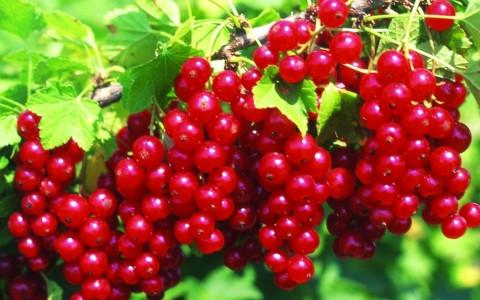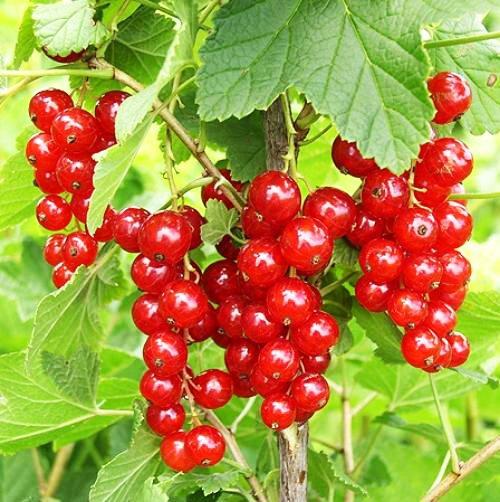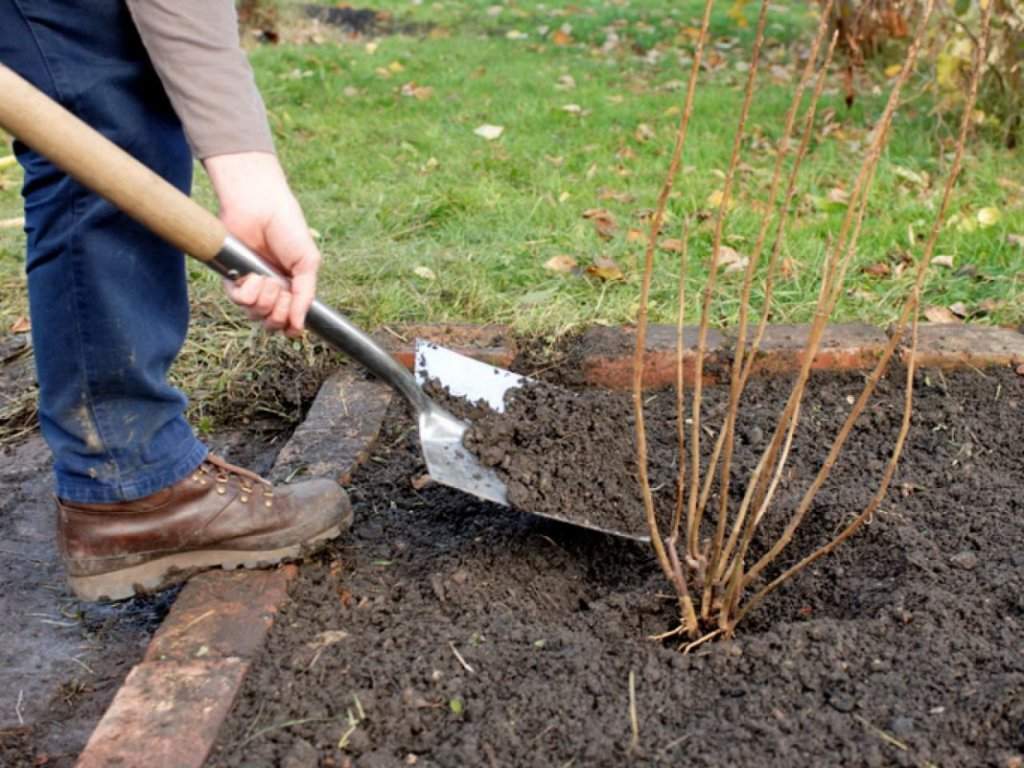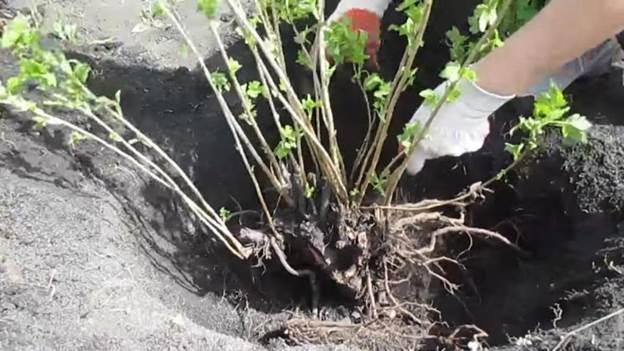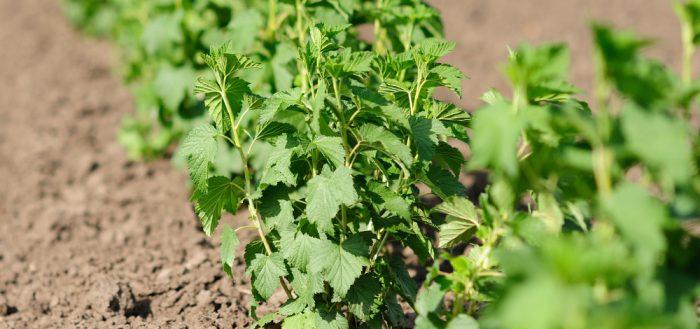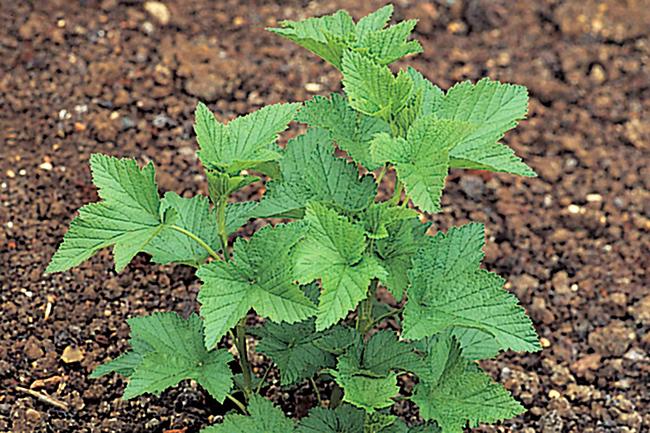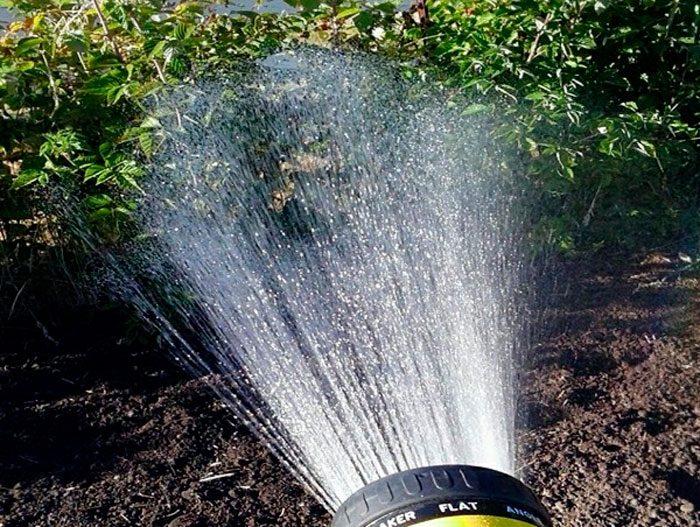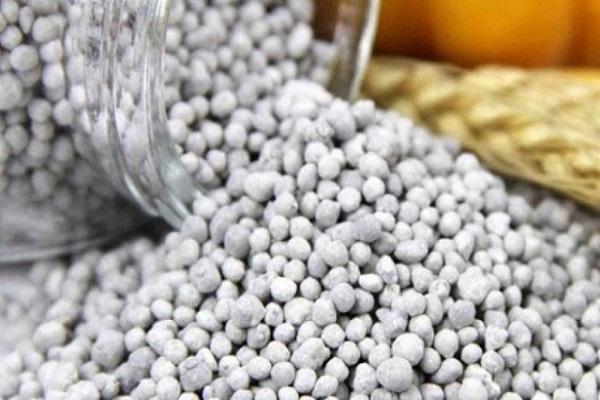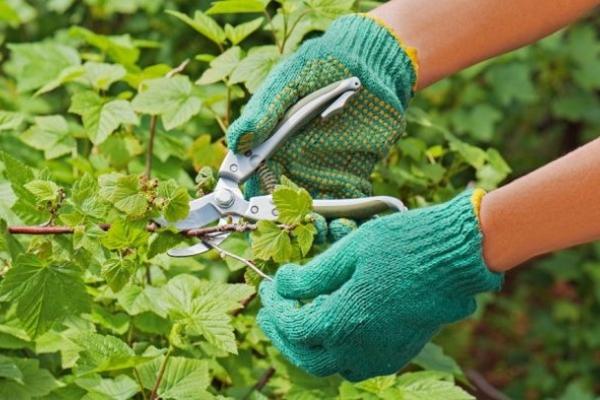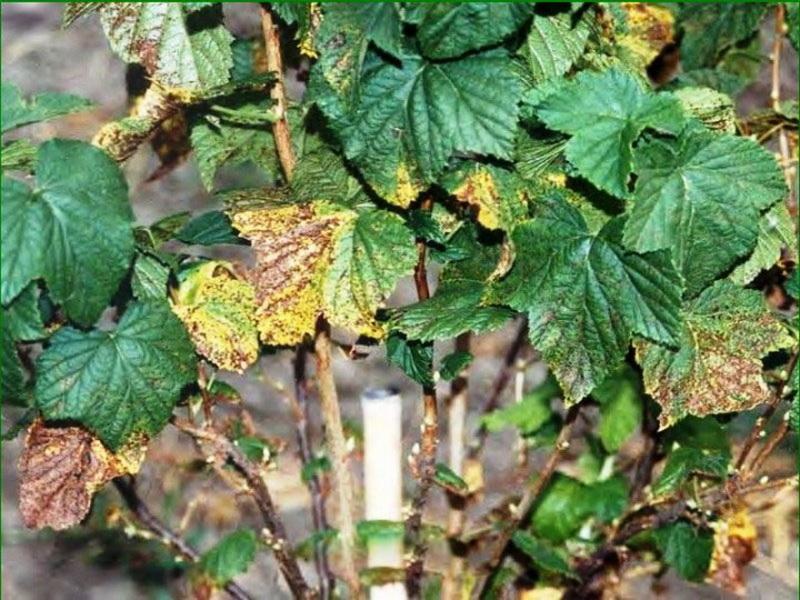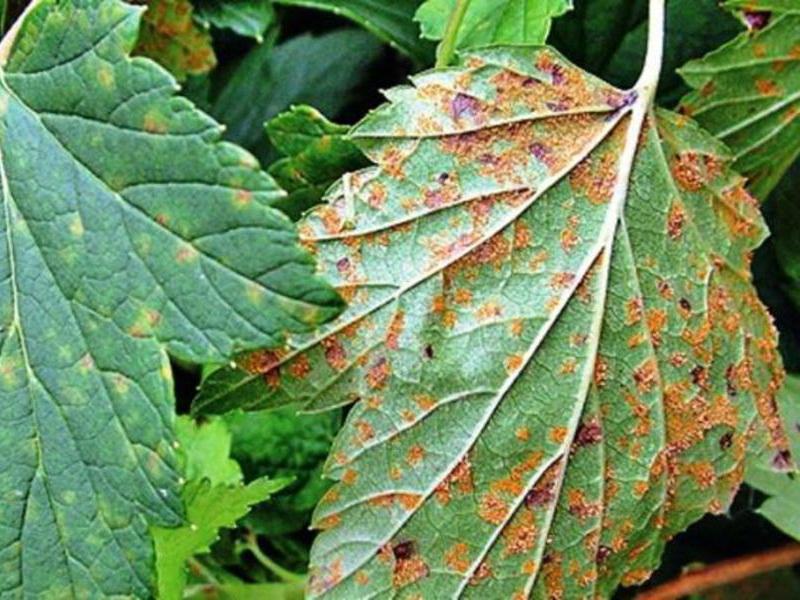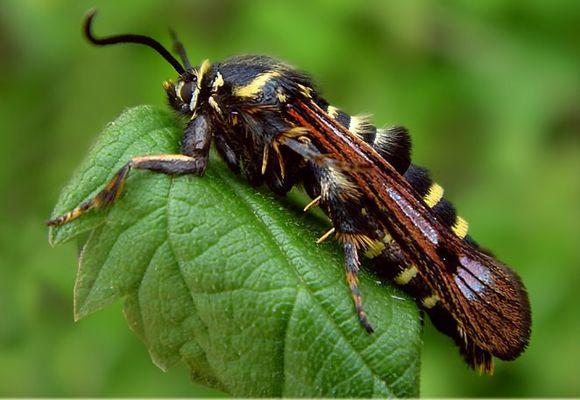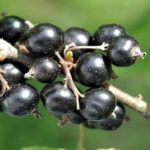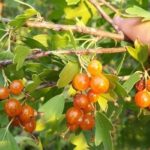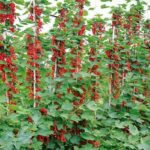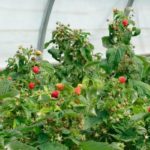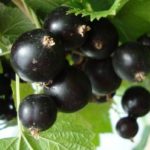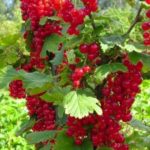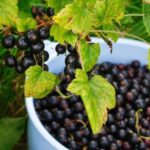Jonker Van Tets is a hybrid, one of the most productive varieties of red currant. The variety is resistant to negative impacts. The berries ripen in the second half of summer. Shrubs decorate the garden and bear a lot of fruit. The main thing is not to violate the planting technology and regularly care for the crop.
- Description and characteristics of the variety
- Advantages and disadvantages of currants
- Growing Jonker Van Tets
- Boarding time
- Site selection and preparation
- Selection of seedlings
- Landing technology
- Nuances of caring for the variety
- Watering
- Fertilizers
- Replanting and pruning
- Shelter for the winter
- Disease and pest control
- Powdery mildew
- Glass rust
- Kidney mite
- Currant glass
- Leaf gall midge
- Harvesting and storage
Description and characteristics of the variety
The variety was obtained by crossing London Market and Faya Fertile currants. The plant is high-yielding (yield - 6.5 kg / bush), reaches an average height of 1.7 m. The bushes grow intensively, gradually becoming dense and erect. In the description of the red currant variety Jonker Van Tets, frost resistance is defined as high. The plant is rarely exposed to the negative effects of pests and the development of diseases.
The shoots are thick and flexible, so they do not break. The leaves are large, toothed, dark green in color. The buds are egg-shaped. The saucer-shaped flowers are as large as the currant leaves; the medium-sized flower cluster contains up to 10 berries.
Currant fruits are large, smooth, bright red, have a round shape and a dense top layer. The weight of the berries is 0.75-1.5 g. The pulp contains several large seeds. The taste is pleasant, sweet with sourness. The fruits are suitable for use in any form.
Advantages and disadvantages of currants
Red currant Jonker Van Tets is often chosen for planting due to the following advantages:
- high self-pollination;
- early maturation;
- frost resistance;
- resistance to the most common diseases;
- high yield and stability;
- large berries;
- excellent taste of fruits;
- variety of useful substances in the composition;
- ease of care and harvesting;
- high portability.
The variety is not ideal, there are also disadvantages:
- increased likelihood of damage to flowers during spring frosts due to early flowering;
- the need to use compost for the tree trunk circle, despite the high frost resistance.
Growing Jonker Van Tets
The plant is successfully grown in temperate climate zones.The bushes tolerate cold winters and dry summers well. In spring, when temperatures fluctuate, mulching is required.
Boarding time
Usually you can buy fresh seedlings in the fall, so this is the best time to plant currants. Most often, planting is carried out in September. In this case, the plant adapts to environmental conditions before the onset of cold weather.
The beginning of September is the ideal period for growing crops in a temperate climate. In the southern regions, implementation of this task can begin in October. The bush will have time to adapt to the changes and will not freeze out with the onset of cold weather.
Summer planting is permissible for seedlings purchased in the last month of winter, which are stored in special containers, have a closed root system and blossoming leaves.
These plants could not be sold in the fall, so they were stored in cold rooms in winter. In this case, spring planting of currants can lead to the death of the bushes due to bright sunlight and temperature fluctuations. Such plants are not immediately planted in open ground; they are left in a greenhouse or on a windowsill until summer.
It is not recommended to plant currants in spring, since during this period the seedlings are sold with blossoming leaves and bare roots. As a result, they do not take root well. But if you apply some techniques, this problem can be prevented.
Site selection and preparation
For currant bushes, choose an open area with good lighting and loose soil, preferably next to a building or fence to provide protection from the wind. With a lack of sunlight, the fruits are less bright and sour.
The culture successfully takes root in well-aerated sandy and loamy soil, neutral or with a low level of acidity.
Since currant bushes react negatively to excess moisture, it is important that the selected area of land is not waterlogged.
Selection of seedlings
A good seedling is the basis for high currant yields. It is imperative to pay attention to the condition of the root system. The roots should be developed, not dry.
Assess the condition of the branches. There must be no mold, rot spots or mechanical damage. If the branches are not dry, but the bark has peeled off a little, this is acceptable. The optimal height of seedlings is from 40 cm.
Landing technology
It is unprofitable to plant only one bush, so gardeners prefer to plant 3-4 currant bushes at once. The planting method is traditional. In order to increase productivity, several bushes of a different variety are placed nearby, maintaining a distance of 1.5 m.
Holes for planting are prepared with dimensions of 50 x 50 or 60 x 60 cm. The optimal depth is 50 cm. Since fertilizers are applied at the preparatory stage, it is enough to use a small amount of wood ash and humus.
The hole for the root system is formed slightly larger than the root itself. When placing a seedling in it, maintain an angle of 45 degrees. The upper part is directed north. As a result, the root collar of the currant should be at a depth of 5-8 cm. After planting the bushes, the soil is compacted. Next, an earthen roller is formed. The final stage of planting is watering and mulching using humus, peat or compost.
Nuances of caring for the variety
Care consists of implementing standard agrotechnical manipulations. The plant is moderately watered and fertilized, and timely pruning is ensured. For preventive purposes, bushes are treated with organic and chemical agents.
Watering
When planting, the bushes are watered abundantly in any weather, using 3-5 buckets of water for each plant. Repeated irrigation is carried out after 5-7 days. The root system of the crop is strong, so in the future the plants can do without water for a long time. However, you should not allow a lack of moisture, as this will lead to growth inhibition and a decrease in the quality of the berries.
After planting, the plants need to be watered twice a week for the first three weeks. At the beginning of the first and last month of summer, active hydration is required, the rest of the time - moderate. However, water is poured not under the root, but into a groove located at a distance of 35 cm from the bush. During rainy periods, you can refuse watering.
Fertilizers
Fertilizing is applied three times per season. In the spring, when shoots are actively growing, each bush is watered with a product prepared from one bucket of organic fertilizer solution and 15 g of urea. After 14 days, the same procedure is performed, but instead of urea, 40 g of superphosphate is used.
After 21 days, prepare a solution consisting of water (5 l), ammonium nitrate and superphosphate (10 g each), potassium sulfate (8 g), this amount of feeding is calculated for one bush. With the onset of autumn, fertilizers based on phosphorus and potassium are used.
Replanting and pruning
At the beginning of the first summer month, currants are replanted with green cuttings with cuts, from early to mid-August - lignified, at the end of May or early June - combined. When using the first method, the cutting is placed in a hole in the ground, a film is laid, or a jar is used. Water regularly and provide ventilation periodically.
After the leaves have formed, the film is removed; if the cutting is ready for planting, this procedure is carried out with the onset of autumn.
When implementing the second method, the cuttings are hilled and watered. If roots appear, during the cold period the crop will not suffer from the negative effects of low temperatures. Using the third method involves digging into the ground and then waiting for 14 days. After planting, the shoots are partially pruned; with the onset of spring or in the last autumn month, old and damaged shoots are removed.
Shelter for the winter
The bushes are covered with special material, but many gardeners replace it with burlap or spruce branches. The bushes are first tied using braid. You can install pegs nearby and tie fabric bags to them, then they will be securely fastened even in strong winds.
Disease and pest control
The variety is not as often exposed to common diseases and the negative influence of pests as other types of currants with red fruits. However, when planting bushes of different varieties, preventive measures are taken. Effective drugs are selected and sprayed.
Powdery mildew
After flowering is completed, use a combination of Tiovit Jet + Aktara. When the fruits ripen, but not earlier than 21 days after the last treatment of the bushes, Topaz and Actellik are used for protection. For preventive purposes, in the spring, the soil is dug up, mulched and the area is cleared of weeds.
Glass rust
When the fruits ripen, a mixture of “Topaz” and “Aktellika” is prepared for spraying. Treatment is allowed before foliage forms. You can use Bordeaux mixture in the form of a solution with a concentration of 1%.
Kidney mite
Excessively swollen buds are removed from the bushes and then burned.After the flowering period is over, the preparations “Enzhio” and “Actellik” are effective; they are used for spraying. When fruits are forming, an insecticide and fungicide are selected. You can prepare a solution for spraying from water (10 l) and chopped garlic (150 g).
Currant glass
For prevention during the ripening period, a combination of insecticide and fungicide is used. As a result, the risk of pest attack is significantly reduced. The measures taken make it possible to keep the berries large and prevent external changes in the bushes.
Leaf gall midge
The pest is identified by swollen red spots on the lower part of the foliage. If such leaves are found, they must be burned. Suitable preparations for treatment are Enzhio and Actellik, and a solution of Karbofos with a concentration of 0.3%. The plants are sprayed again at the end of flowering.
Harvesting and storage
Fruit ripening on currant bushes does not occur simultaneously, so harvesting can last about 20 days. In order for the berries to be stored well, they are collected dry and always in whole clusters. The optimal container capacity is up to 2-2.5 kg.
The shelf life of currants is short - 2 weeks without refrigeration at a temperature of +10-12 degrees, 1.5 months in the refrigerator (do not wash first) and more than 12 months in the freezer. Thawed product cannot be re-frozen.
The red-fruited bushes of the variety in question have many advantages. The plant is one of the best representatives of red currants for the middle zone. However, it is necessary to follow the planting technology, provide proper care for currants in a timely manner, and treat the bushes for preventive purposes.

